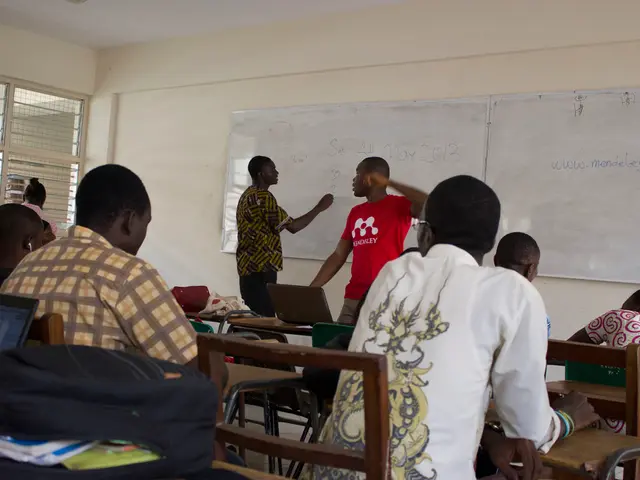Crafting Emergency Water Filters: A Detailed Manual
In emergency situations, clean drinking water is a must for survival. That's why learning how to build an emergency water filter is a valuable skill, especially when faced with contaminated water sources. Here's how you can create your own water filter using everyday materials, as well as other methods for purifying water.
Emergency Water Filters
Bottle Filter
- Materials: Plastic bottle, clean cotton or cheesecloth, coffee filter or porous cloth, charcoal (from campfire or BBQ), sand (fine and coarse), gravel or pebbles
- Steps: a. Cut the bottom off a plastic bottle. b. Poke a small hole in the cap. c. Layer the filter materials: Coffee filter or cheesecloth at the bottom, cotton balls, pulverized charcoal, fine sand, and coarse gravel. d. Pour dirty water into the top and collect the filtered water from the bottom.
Multi-Bucket Filter
- Materials: Three buckets, drill with hole saws, screening material, ceramic tiles or charcoal, sand and gravel, epoxy
- Steps: a. Drill holes in the buckets and attach screening material. b. Layer the filter materials: Crushed charcoal in the bottom bucket, fine sand in the middle bucket, and coarse gravel in the top bucket. c. Assemble the buckets and pour water through the top.
DIY Ceramic Filter
- Materials: Clay or ceramic pot, fine sand, gravel, charcoal
- Steps: a. Create a small hole at the bottom of the pot. b. Layer the filter materials: Fine sand, gravel, and charcoal. c. Pour water through the filter and collect the purified water.
Additional Water Purification Methods
Boiling
- Materials: Pot or stainless container, fire source
- Steps: Bring the water to a boil for at least 10 minutes to kill bacteria and viruses.
Solar Disinfection (SODIS)
- Materials: Clear plastic or glass bottle
- Steps: Fill the bottle with water and place it in direct sunlight for 6 hours (or longer on cloudy days).
Calcium Hypochlorite
- Materials: Calcium hypochlorite (at least 68% concentration), water
- Steps: Mix one teaspoon of calcium hypochlorite with two gallons of water to create a disinfecting solution. Add the solution to the water at a ratio of 1:100.
Iodine Tablets
- Materials: Iodine tablets, water
- Steps: Add one iodine tablet to a quart of water and wait at least 15 minutes before drinking.
Tips for Effective Filtration
- Layering Order: Always start with coarse materials and end with finer materials to catch smaller impurities.
- Disinfection: After filtration, consider boiling or using UV light to disinfect the water to ensure it is safe for drinking.
- Maintenance: Regularly clean and replace filter materials to maintain effectiveness.
In conclusion, building an emergency water filter is a practical skill that can provide clean drinking water in critical situations. By using simple materials and following these instructions, anyone can create a functional filter. Remember, while these filters can remove many impurities, additional disinfection steps may be necessary to ensure the water is completely safe for consumption.
For more information on water filtration and purification, check out our enrichment data.
Incorporating science, health-and-wellness, and fitness-and-exercise, developing an emergency water filter is a crucial skill for survival that can be applied to various situations where clean drinking water may not be available. Aside from building water filters, methods such as boiling, solar disinfection, using calcium hypochlorite, iodine tablets, and maintaining a good layering order are important in ensuring the water is safe for consumption.







